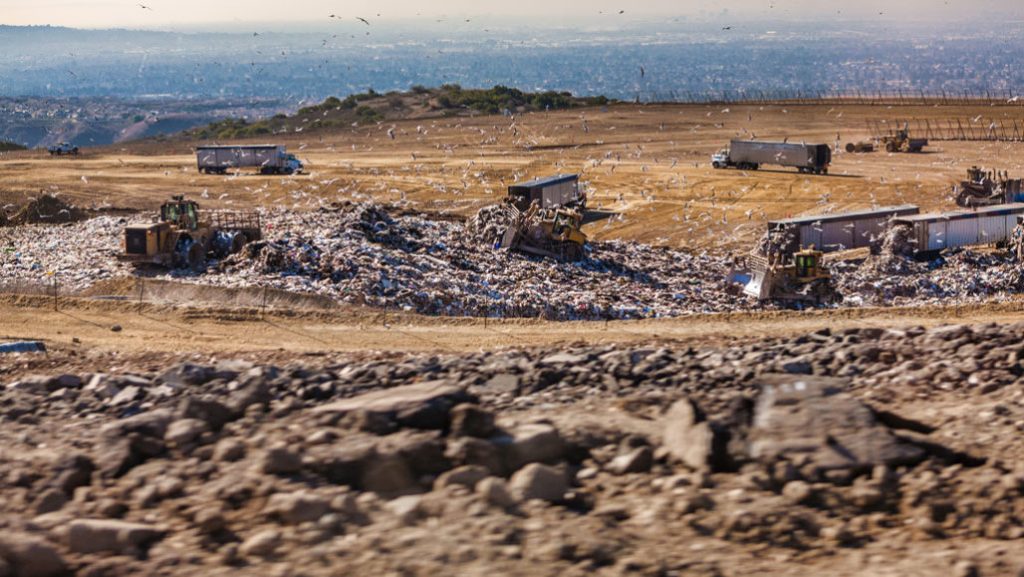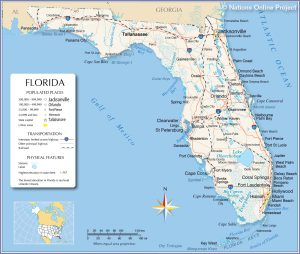Landfills Emit Large Amounts of Methane
Science News recently reported that Californian landfills emit an alarming amount of methane from decaying waste. Researchers made use of remote sensing technology to find “hot spots” that emit greater than expected amounts of methane and found that landfills were the worst offenders in the state and account for 41% of methane emissions. Dairy farms and the oil and gas industry tied for second place at 21% of methane emissions each.
The research was conducted as part of a partnership between NASA, the California Air Resources Board and the California Energy Commission. Airplanes with imaging spectrometers collected data to generate a detailed, high-resolution map of methane emissions throughout California from 2016 to 2018.

Image credit Science News
The data can be used to pinpoint large point sources such as leaky pipelines and malfunctioning gas-capture systems, making it valuable for knowing when and where repairs to methane industry infrastructure should be made.
Methane is a powerful greenhouse gas that generally lasts about 12 years in Earth’s atmosphere. By way of comparison, nitrous oxide can last 114 years, carbon dioxide can last betwen 20 and 200 years, and water vapour, though an efficient absorber of heat, usually doesn’t linger much longer than a few days in Earth’s atmosphere. So it would be easy to see methane emissions as a “don’t panic” scenario purely because other greenhouse gases can linger for far longer.
But still, because methane IS a powerful greenhouse gas, any major emissions like the ones coming out of California’s landfills should be mitigated if possible and not only because this is probably an embarassment for climate-conscious Califonians. The question is how to do it.
Mitigation Efforts Necessary to Combat Methane Emissions
In the case of landfills, most of the methane is generated by decaying organic waste such as discarded food and paper products. Essentially, if it’s “biodegradable,” then it can release methane as it degrades.
Some landfills already try to mitigate the release of methane into the atmosphere by running methane collection lines. However, as the study of methane emissions in California shows, these collection lines can develop leaks.
And of course you saw the “Let’s reduce waste” comment coming, right? It’s been estimated that about 40% of groceries are thrown out and most of it ends up in landfills as methane-emitting organic waste. This could be somewhat mitigated by not buying that kale you know you’re never going to eat and not forgetting to eat that cucumber in the bottom of your vegetable drawer.
As you probably know if you’re reading this article, Sweden does a
great job of burning any trash that can be burned to generate
electricity. Recycling is required by law. Composting is a bigger thing in
Sweden than in the United States. As a result of all this, only 28,122 metric
tons (roughly 31,000 “regular” tons) of Swedish waste out of the 4.26
million metric tons of waste that Swedes produce every year winds up in
landfills. So basically, the “reduce, reuse, recycle” crowd in the
United States should be taking notes if it wants to reduce both methane
emissions and the sheer amount of waste that winds up in landfills.
The concept of landfill
reclamation should also be taken more seriously. Landfill
reclamation basically takes existing landfills that are unsuitable for any
other purpose and engineering fixes for any issues with the land and
surrounding areas such as subsidence and toxins that might leak into the water
supply. The cost of doing
this can be high, but can be offset by selling recyclables and any
other materials that can be salvaged from the landfill, as well as composting
any still-intact food waste and creating the infrastructure necessary to
emulate Sweden’s practice of burning otherwise-unusable waste for energy.
These practices can help to reduce methane emissions coming from landfills, reduce overall waste, and reclaim the land that would otherwise remain unused as anything other than landfill space.








